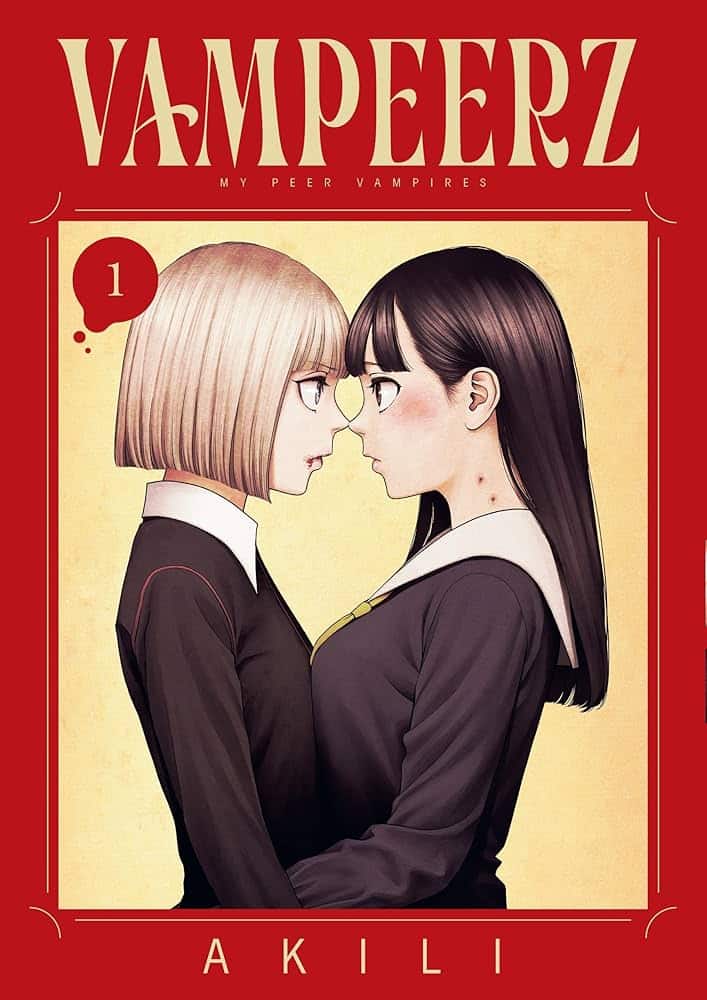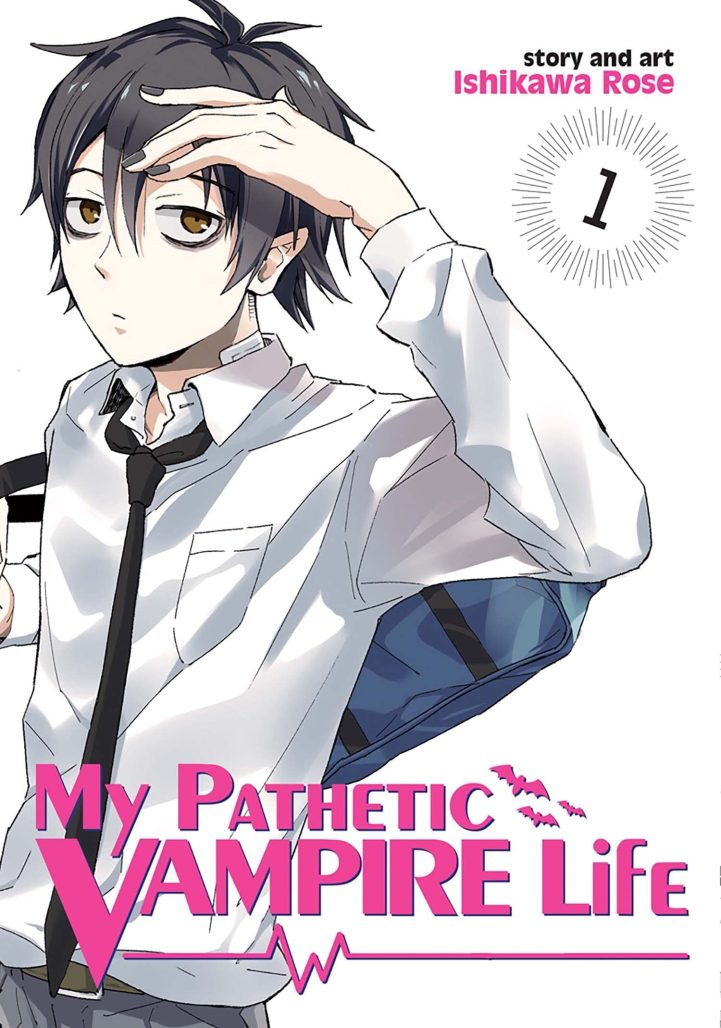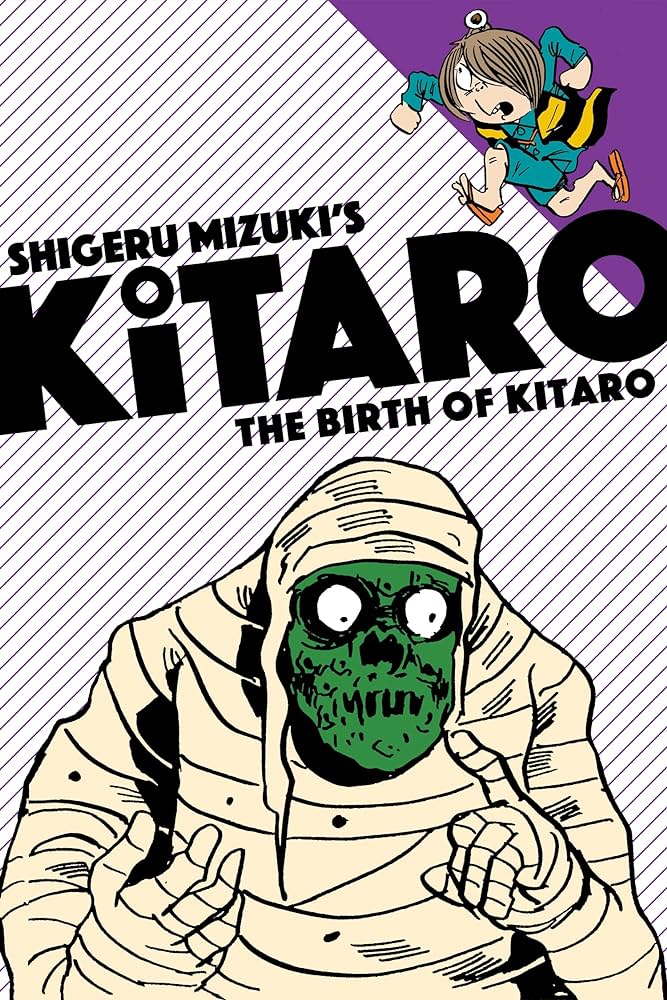There are two universal truths in today’s rapidly changing comics industry. The first is that Dog Man es the defining comic of our era. The second is that more people are reading manga and Webtoons (aka vertical scroll comics) than ever before. Therefore we at The Comics Beat have chosen to embark on a new venture: Beat’s Bizarre Adventure. Every week we’ll have three writers recommend some of their favorite books and series from Japan, Korea and elsewhere. This week in our special Vampire Edition, we have vampire girlfriends, vampire students and, of course, Dracula.

VAMPEERZ
Writer/Artist: Akili
Translator: Molly Rabbit
Proofreading: Patrick Sutton
Production: Glen Isip, Nicole Dochych, Mo Harrison
Original Cover Design: DEPARTURES
Digital: Taneli Vatanen
Publisher: DENPA
I’ve read so many vampire manga over the years: Hellsing, Seraph of the End, Rosario+Vampire, Blood Blade, Blood+, Call of the Night. But there’s one I’ve read and reread so many times that it’s become a source of comfort for me: Akili’s VAMPEERZ. A vampire yuri series that runs from 2019 to 2023, it follows a 14 year old girl named Ichika. She falls in love with Aria, a vampire lord from abroad and an old friend of Ichika’s late grandmother. Aria too becomes interested in Ichika and moves in with her. But Aria’s hope is that Ichika might kill her with a sacred blade. Cue the arrival of Aria’s vampire rivals, come either to kill her or two of her stop her from killing herself. Meanwhile, Ichika gives Aria love and affection to convince her that life (or undeath at least) is worth living.
What I love about VAMPEERZ is the way that Aria, who has lived a long life, has affected everyone else’s lives. She’s a catalyst in the fate of other vampires from all over the world. The series also has cute moments of comedy, which work thanks to Akali’s adorable art style of hers. The characters have large eyes as typical for manga, but are also not entirely detailed in terms of lineart. That empowers Akali to draw vivid expressions: widened eyes, large mouths, and even pratfalls straight out of a Condorito comic strip.
While many panels lack backgrounds, it is barely noticeable as the focus is entirely on the characters and speech bubbles. Backgrounds are only used to establish a change of scenery or to show a different angle in that same setting. I also recognized the use of specific Clip Studio Paint brushes and assets. As a working artist, it’s validating to see other artists use and repurpose available assets in creative ways. It makes me feel less ashamed of doing that myself.
Aria and Ichika’s relationship is very cute. They chat, go to school together, kiss and then spend panels blushing and being all wide-eyed. I also enjoy the characters Aria and Kara. They get up to all kinds of hijinks, like running around school wearing overly detailed horse masks. Also, Aria kicks a giant crow in the face! — Justin Guerrero


My Pathetic Vampire Life
Writer/Artist: Rose Ishikawa
Translation: Amber Tamosaitis
Lettering: Rina Map
Publisher: Seven Seas Entertainment
Koide is your typical edgy 16 year old, save for the fact that he is a vampire. This year will be his 134th time going through the first year of high school. The same boring clicks among students, the same tedious classes; all firsts for his classmates but only dull repetitions for him. Even worse, he has to endure all this while the sun is out and his energy is the lowest. Will this cycle be the one where he can finally fit in?
Rose Ishikawa‘s My Pathetic Vampire Life It was the perfect Sunday read for me. The premise is simple but imaginative, sprinkled with vampire-related superstitions and pop culture references. Ishikawa playfully bends or subverts commonplace vampire tropes. They don’t turn into ashes when exposed to the sun, but they do become sick if they spend time outside. They avoid contact with water and hate dogs with a passion because they are descended from wolves. “Young” vampires must attend high school or be hunted by the government. Koide was turned into a vampire at age 16 in 1880, so he is eternally a freshman.
The series has its blink-and-you-miss-it moments of darkness. Koide’s vampire friend Miura casually explains that the marks on his back were from when he was tortured in the Middle Ages. Death or dying is also commonplace for vampires, who must learn to send off their family, friends and acquaintances. But Ishikawa doesn’t let you get too down, and she lights up the drama with her whimsical art style and meme-worthy facial expressions.
I enjoy repetitive jokes in gag manga when done in moderation, where the repetition itself becomes funny; However, I understand it might be a turn-off to someone. The series is just two volumes and while certain gags might feel redundant, they don’t run long enough for them to get annoying. I recommend this series to people looking for (mostly) light-hearted, short, and amusing series to read between longer or more challenging comics. — Merve Giray

GeGeGe no Kitaro
Writer/Artist: Shigeru Mizuki
Translator: Zack Davisson
Publisher: Drawn & Quarterly
Shigeru Mizuki is one of the most influential manga artists in history, yet for many years his work was unavailable in English. That began to change with the translation of his anti-war story Onwards Towards Our Noble Deathsand especially with the success of his four volume history/memoir Showa. Yet Mizuki is best known in Japan not for grim history, but for spooky and humorous tales of supernatural yokai. These are at the center of GeGeGe no Kitarothe series that made Mizuki a household name.
Kitaro is a one-eyed boy born in a cemetery. His dad is a walking eyeball that lives in his head. Kitaro is fast, strong and can defend himself with his prehensile hair. But he’s not quite a traditional hero. He’ll help those in need, but only when he feels like it. Similarly, many of the troublesome yokai he meets are also (in other circumstances) his friends. The supernatural world of Kitaro is a mess of annoying neighbors and con-men, not the endless tournament of a Shonen Jump comic. Yokai don’t fight to become stronger but instead just take things when they are bored or hungry.
Kitaro, of course, is just one of the many memorable characters in this series. His sometimes-almost Nezumi Otoko is constantly scamming other spirits and humans, only to stumble into terrible trouble. (Readers of Showa may be surprised by how different he appears here.) His arch-nemesis, Neko Musume, has a big toothy grin and a love of fish. Other guest stars include the fiery Hideri Gami, the tricksy Nurarihyon, and even a descendant of Dracula. (There it is, there’s our vampire connection.)
These comics were drawn many decades ago and can be old-fashioned. The pacing is much more compressed than is typical for manga today. Stories also end abruptly at times, as if Mizuki just ran out of ideas or space. Mizuki’s eye for human nature, though, is just as sharp as in his historical work. These are not so many stories of “good versus evil” as they are about threading the needle between forces of nature and human (or inhuman) appetites. Kitaro himself is as susceptible to these forces as anyone else.
As an American, I don’t recognize all the folk such that Mizuki riffs on in Kitaro. But I enjoy the ones that I do; I would never have expected a kappa to use its forehead dish as a lens. Mizuki superfan Zack Davisson also provides helpful “Yokai Files” in every Kitaro release to date. He’s the lead translator on seven Kitaro releases from Drawn & Quarterly. There’s also the option of Drawn & Quarterly’s thick 400 page Kitaro collectiontranslated by Jocelyne Allen. Regardless of which flavor of Kitaro you prefer, it’s a good time. — Adam Westcott
Follow Beat’s Bizarre Adventure to get weekly manga and webtoon recommendations!



